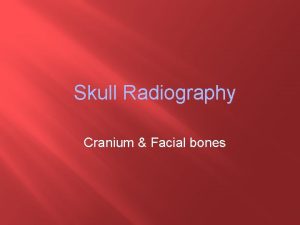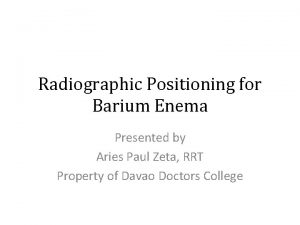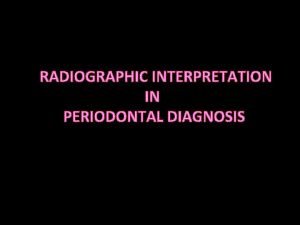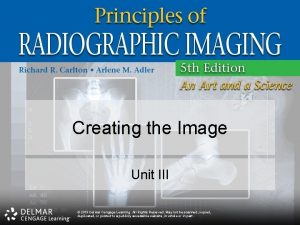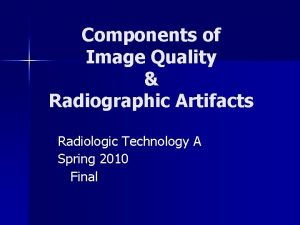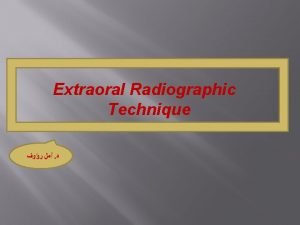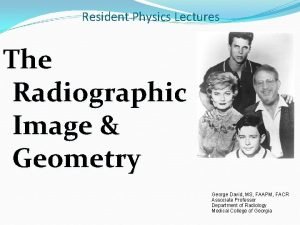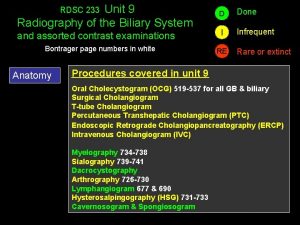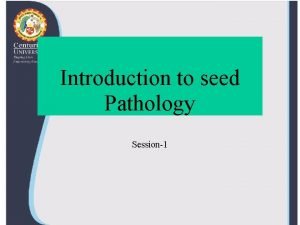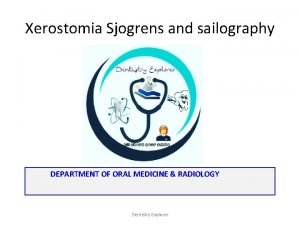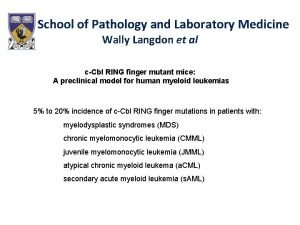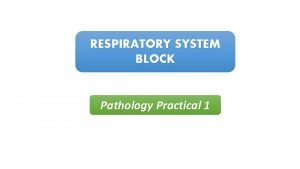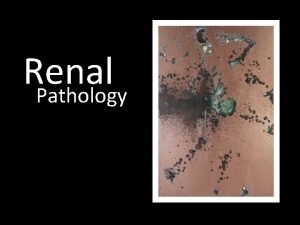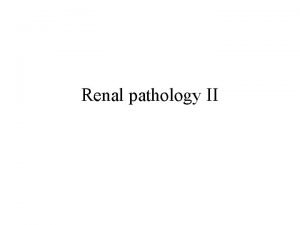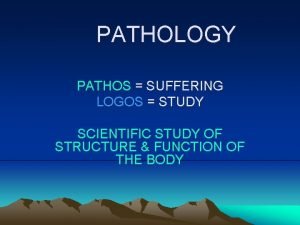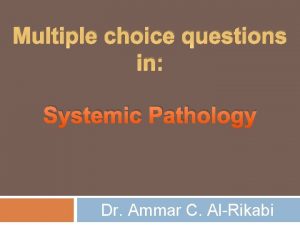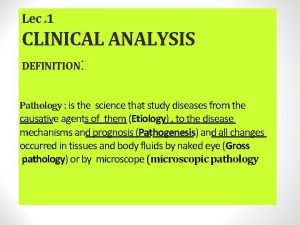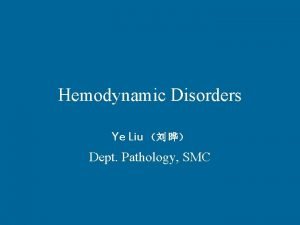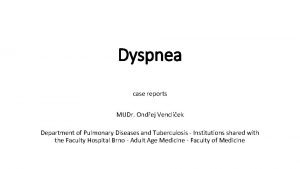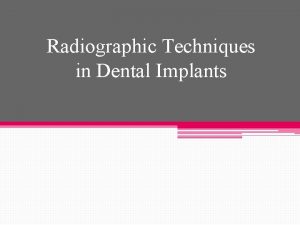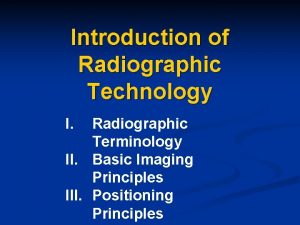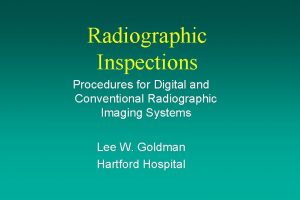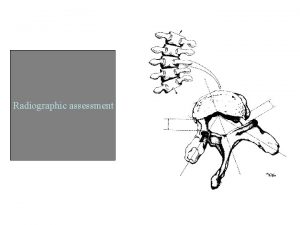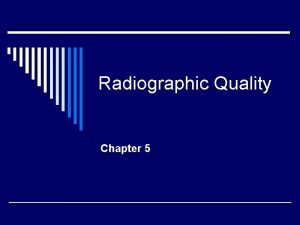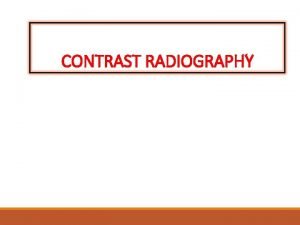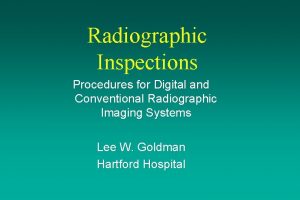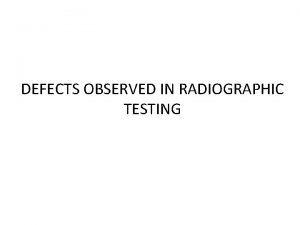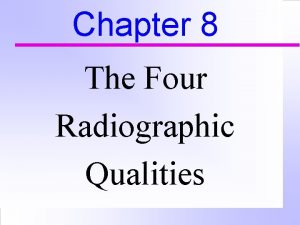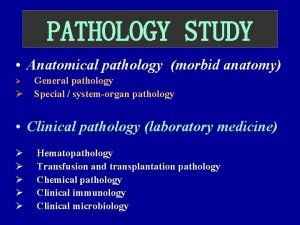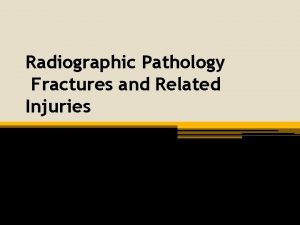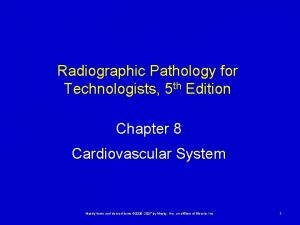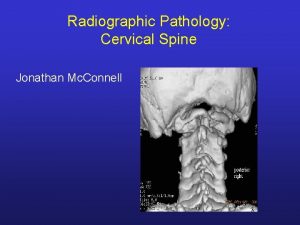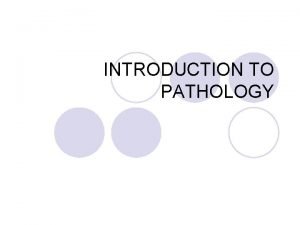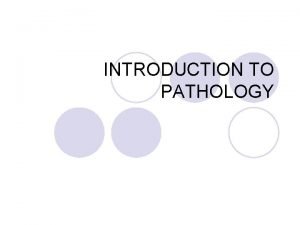Introduction to Radiographic Pathology Spring 2013 1 Pathology









































- Slides: 41

Introduction to Radiographic Pathology Spring 2013 1

Pathology Pathogenesis Disease Signs vs. Symptoms Diagnosis Prognosis Acute vs. Chronic disease Sequelae Etiology Epidemiology Syndrome 2

Causes of Disease Normal agents Bacteria, viruses, trauma, and heat Adverse reactions to medical treatment Iatrogenic Poor infection control Nosocomial No known cause Idiopathic 3

Technique Adjustments Subtractive Additive Lytic Sclerotic Destructive 4

Disease Tracking CDPH NCHS CDC Monitoring Trends Epidemics Intervention 5

Life Expectancy 6

Health Care Costs and Changes Delivery Methods Ambulatory care Inpatient services Health care costs Increasing costs Sources of funding Medicare Medicaid Private insurance Cash 7

Disease Classifications Hereditary Congenital Inflammatory Metabolic Degenerative Traumatic Neoplastic 8

What is the difference between Congenital and Hereditary? 9

Congenital In utero Maternal infections, radiation, trauma or drugs Usually cannot be recognized before birth 10

Hereditary Genetically transmitted from either parent to child Genetic testing can detect these before birth Intervention Terminate pregnancy Make decisions 46 chromosomes 44 automsomal 2 are X and Y XY XX 11

Inflammatory Diseases What is inflammatory disease? Body’s reaction to a injurious agent Primary causes Invasion by microorganisms Infective diseases Poisoning by biologic substances Toxic diseases Overreaction of body’s own defenses Toxic diseases 12

4 Stages of Inflammation 1) Alterations of blood flow and vascular permeaability Dilation of arterioles, capillaries and venules Produces increased blood flow around injury site Causes heat, redness and pain 2) Migration of WBC to injured tissue Leukocytosis occurs Mainly leuckocytes such as neutrophils and macrophages 13

4 Stages of Inflammation 3) Phagocytosis WBC engulf and digest infecting organisms 4) Repair of injury Regeneration of normal cells Granuation tissue 14

Inflammation Chronic inflammation: Damage caused by an injurious agent may not result in necrosis Longer duration of inflammation periods Acute inflammation: Heat Redness of skin Swelling Pain Loss of function Elevated body temperature 15

Redness 16

Heat And Fever 17

Swelling 18

Pain 19

Loss of Function 20

Localized Edema Inflammatory Process Lymph obstruction 21

Generalized Edema • Usually occurs form CHF, cirrhosis and many renal diseases • Gravity causes it to be more prominent in lower body • Sedentary persons • Lower back • Lungs • Sacral area 22

Traumatic Disease that may result from mechanical forces such as crushing or twisting of a body part or from the effects of ionizing radiation on the body Fracture Wound Bruise/contusion

Neoplastic Defined as: new abnormal tissue growth Come from latin word “neoplasia” meaning new growth Abnormal proliferation that are not governed by laws of normal cells Cell act as parasites competing with normal cells for their metabolic needs Onocology- study of neoplasms Derived from greek word “oncos” which means tumor 24

All tumors have 2 basic components 1) The organ tissue is made up of proliferating neoplastic cells 2) The supporting tissue is made up of connective tissue, blood vessels and possibly lymphatic cells. 25

Grading (Differentiation) Used to assess biologic behavior and choice of treatment Differentiated tumors Tend to grow slow Resemble cells of origin Poorly differentiated or undifferentiated Rapid growth Exhibits atypical characteristics and does not resemble cells of origin 26

TNM System Staging of cancer TNM system emerged in 1950 s and endorsed by AJCC T—Tumor N—Node (lymph node involvement) M—Metastases Addition of numbers indicates the extent of malignancy and progressive increase in size or involvement of tumor

Tumor Word Roots 28

Benign Neoplasms Closely resemble their cells of origin in structure and function Remain localized Can be surgically removed Can still have severe consequences EX: Pituitay tumore can cause pressure and destruction of gland Pancreas- excessive insulin can be fatal Brain and spinal cord- impair or alter CNS function Trachea / esophagus- occlude air supply or swallowing 29

Benign Tumors Consist of differentiated cells Add suffix OMA to root word Examples: Fibromas Chondromas Adenoma Lipomas Myomas Angiomas 30

Malignant Neoplasms Invade and destroy adjacent structures Metastasize Poorly or undifferentiated so it may be impossible to determine origin Cancer comes from the latin word crab, because it has fingerlike projections that resemble crablike claws 31

Malignant Neoplasms Carcinomas- epithelial origin Affects epithelial cells, skin and mucus membranes Comes from greek word “karkinos” which means crab Adenocarcinoma- malignancies from glandular tissue breast, liver, pancreas, and cells lining the GI tract 32

Malignant Neoplasms Cont. Squamous cell carcinoma- tumors of connective tissue Resemble stratified squamous epithelia Lungs, head and neck regions Sarcomas- connective tissue Highly malignant and spread rapidly Bone, muscle, and cartilage Less common than carcinomas 33

Metastatic Methods 4 1) Seeding- travels to distant sites and organs 2) Lymphatic-Spreads through lymphatic system 1) Especially lung and breast 2) major metastatic route of carcinomas 3) Invasion 1. Spreads to other areas in close proximity 34

Metastatic Methods cont. 4) Hematogenous- spreads through circulatory system Tumor cells invade and penetrate blood vessels Travel as emboli until they get stuck Invade wall in the vessel they are stuck Infiltrate to surrounding tissue Examples Abdominal carcinomas metastasize to liver Because of flow of the portal vein blood to that organ Midline organs spread to vertebrae Neoplasms in organs that drain into inferior & superior vena cava, such as kidneys spread to lung 35

Carcinogens Chemicals that alter DNA Air and water pollution Cigarette smoke Asbestos Sun, bombs, and radiation Viruses that alter genetic material 36

Treatment Options Surgical removal Well localized tumors with no metastases Radiation Therapy Fast growing Poorly or undifferentiated tumors Chemotherapy Cytotoxic substances used to kill neoplastic cells Kills good cells to causing significant complications 37

Degenerative—Disease caused by a deterioration of the body May occur following traumatic injury, regardless of age May occur as a hereditary illness Process of aging Factors affecting the rate of aging Hereditary Diet Enviromental factors Sedentary lifestyle

Degenerative Diseases Atherosclerosis Osteoporosis Osteoarthritis 39

Metabolic Disease caused by the disturbance of the normal physiologic function of the body Metabolism is the sum of all physical & chemical processes in the body To function Maintain homeostasis

Metabolic Disease Endocrine disorders Hypersecretion Insufficient secretion Fluid and Electrolyte imbalances Dehydration Insufficient water Loss of too much water Can occur from: Vomiting Diarrhea Diuretics Athletic (very hard training) 41
 Radiographic baseline skull
Radiographic baseline skull Right lateral position
Right lateral position Grid construction in radiology
Grid construction in radiology Darkroom entrance
Darkroom entrance Dental radiographic interpretation ppt
Dental radiographic interpretation ppt Acanthion
Acanthion Oid in radiology
Oid in radiology Interdental septum
Interdental septum Radiographic film
Radiographic film Emulsion pick off artifact
Emulsion pick off artifact Reverse towne projection uses
Reverse towne projection uses Radiographic films
Radiographic films Absorption unsharpness
Absorption unsharpness T tube cholangiogram
T tube cholangiogram Kim ki duk summer fall winter spring
Kim ki duk summer fall winter spring Spring, summer, fall, winter... and spring
Spring, summer, fall, winter... and spring Seed pathology notes
Seed pathology notes Introduction to ms word 2013
Introduction to ms word 2013 Introduction to spring framework
Introduction to spring framework Spring boot aspect example
Spring boot aspect example Tree in winter appearance sialography
Tree in winter appearance sialography Define seed pathology
Define seed pathology Banff pathology course
Banff pathology course Pathology job market
Pathology job market Pathology outline
Pathology outline Sample diagnostic report for speech-language pathology
Sample diagnostic report for speech-language pathology Wally langdon
Wally langdon Bronchiectasis gross
Bronchiectasis gross Benign nephrosclerosis pathology outlines
Benign nephrosclerosis pathology outlines Pathology
Pathology Pathos pathology
Pathos pathology Systemic pathology questions and answers pdf
Systemic pathology questions and answers pdf Leeds pathology slides
Leeds pathology slides Clinical analysis meaning
Clinical analysis meaning Branches of pathology
Branches of pathology Hltpat001
Hltpat001 Zahn line
Zahn line Dr ayling sanjaya
Dr ayling sanjaya Histology thyroid gland
Histology thyroid gland What pathology
What pathology Cumulus clouds in oral pathology
Cumulus clouds in oral pathology Chapter 17 oral pathology short answer questions
Chapter 17 oral pathology short answer questions
